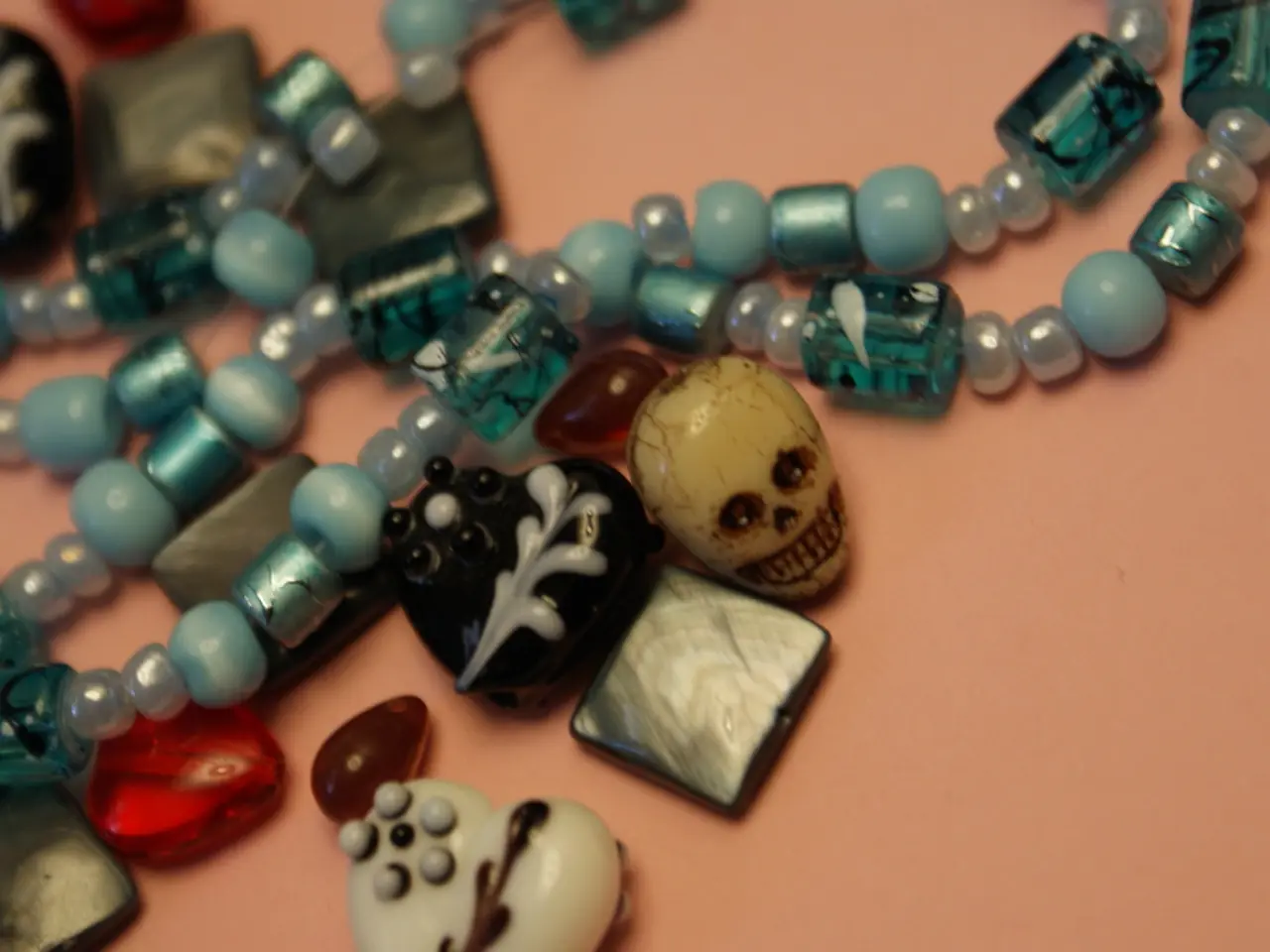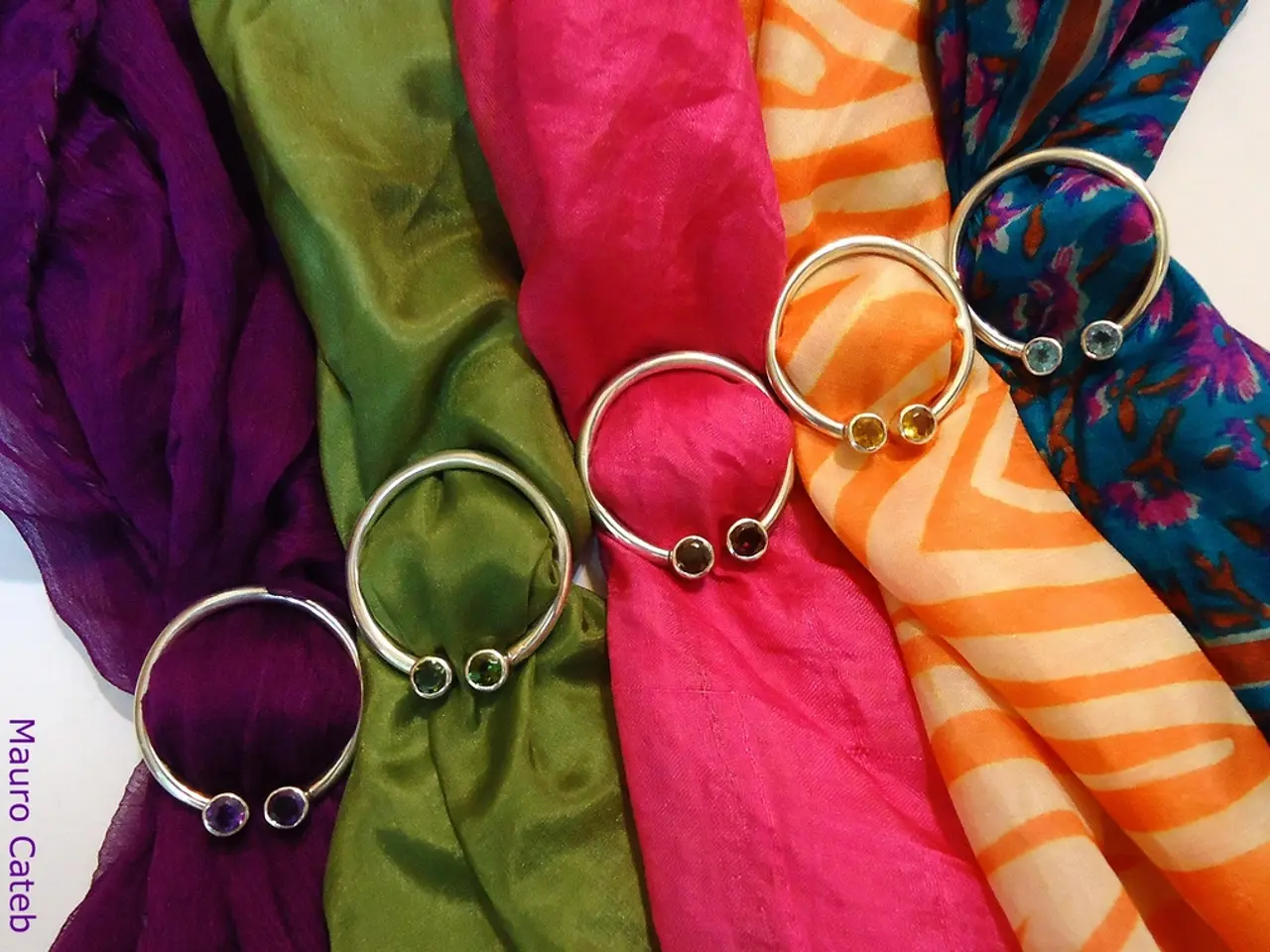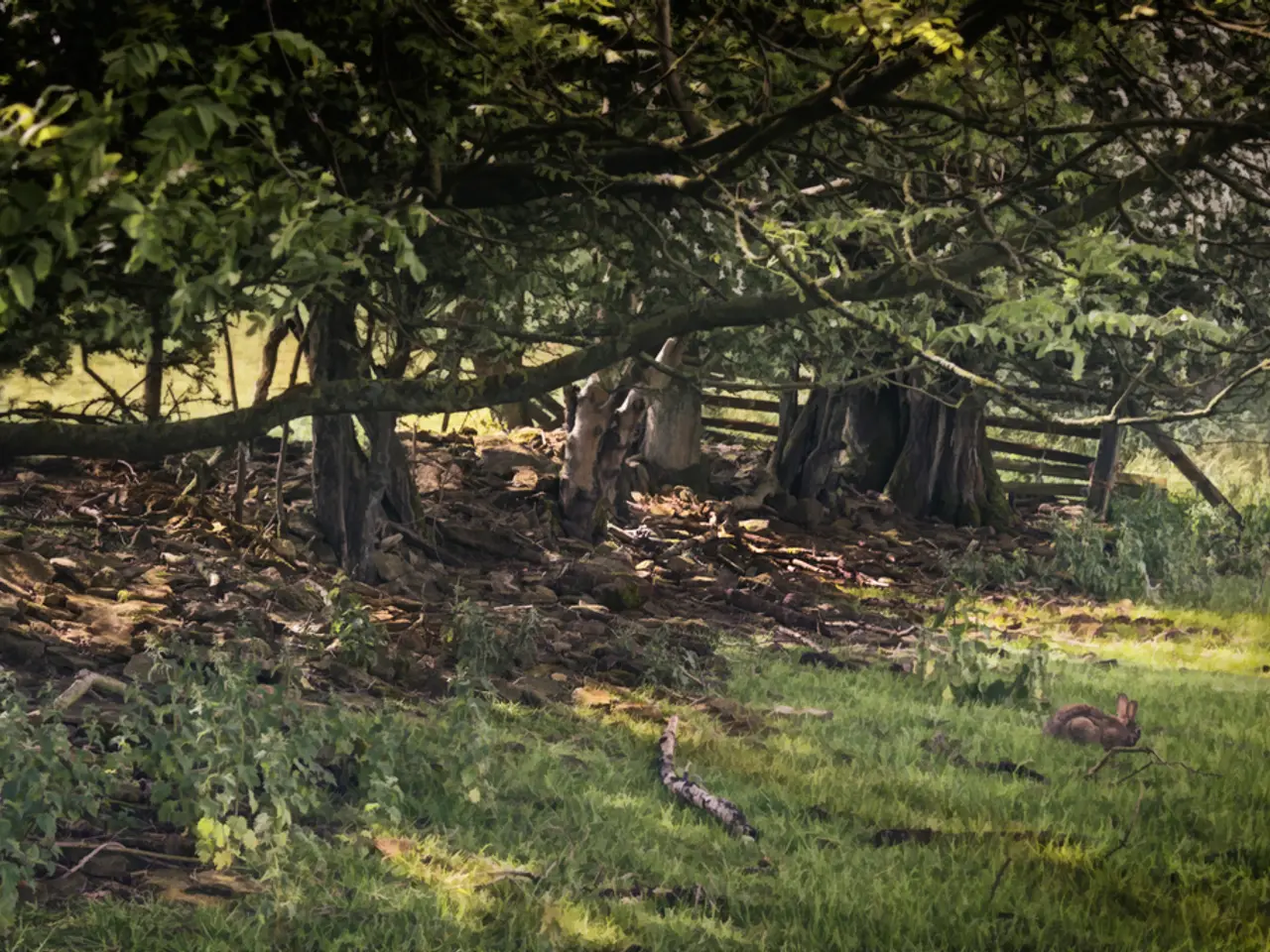Information on Malachite: Value, Pricing, and Jewelry Details
In the realm of mineralogical wonders, malachite stands out for its distinctive swirling and concentric band patterns. This vivid green mineral, found in various parts of the world, is a testament to the intricate dance of water, carbon dioxide, and copper-rich rocks.
Malachite, a secondary mineral, forms through chemical reactions involving preexisting copper-containing rocks and carbonate materials. Typically, it emerges when water containing carbon dioxide or dissolved carbonate minerals reacts with copper-rich rocks, or when solutions carrying dissolved copper minerals interact with carbonate rocks. The result is the precipitation of copper carbonate hydroxide, creating the beautiful malachite.
The swirling and concentric bands in malachite are a direct visual record of fluctuating chemical environments during its slow deposition from copper-rich groundwater interacting with carbonate rocks. These variations in solution conditions over time, such as changes in the concentration, chemistry, and availability of copper and carbonate ions, cause periodic changes in mineral deposition, resulting in the layered and banded structures that characterise malachite.
Throughout history, malachite has been highly valued for its aesthetic appeal. Victorian-era jewelers often used malachite in small carvings, beads, and cabochons set in silver and, occasionally, gold. The Russian royals of the 19th century were fond of malachite, commissioning dining sets, huge sculptures, vases, and even paneling made from this striking mineral.
Malachite's patterns are not just visually captivating; they also offer a glimpse into the conditions under which the mineral formed. The swirls and bands reflect the waxing and waning of the solutions necessary for formation and the changes in their chemical content.
Malachite's value in carvings and ornamental objects primarily depends on size and artistry. However, pieces with unusual crystal habits, distinctive patterns, or chatoyancy have higher values. Some of the rarest and most desired malachite mineral crystal structures are botryoidal masses, stalactites or slices cut from them, and pieces with splayed-out clusters of needle-like crystals showing a velvety chatoyancy.
While malachite is abundant, mining and cutting it can pose risks due to the copper content of malachite dust, which is toxic to breathe. Protective gear should be worn by workers involved in these processes.
Malachite's hardness, ranging from 3.5 to 4.5 on the Mohs scale, makes it somewhat brittle and requires special care as a jewelry stone. It should not be subjected to mechanical cleaning methods or acidic cleaners.
Interestingly, there are no commercially available synthetic malachites. Malachites from the Democratic Republic of the Congo, Namibia, Russia, and the American Southwest are the most common sources of malachite gem rough.
Malachite has a rich history, dating back to 4,000 BCE, when it was mined in Egypt and used for jewelry, ornaments, painting, and cosmetics. It has been used in protective amulets since ancient times.
In conclusion, malachite's elegant banding is a testament to the complexities of nature and the intricate dance of water, carbon dioxide, and copper-rich rocks. Each swirl and band tells a story of the conditions under which the mineral formed, making each piece a unique and captivating addition to any collection.
- Malachite, once mined and processed, is often used in various auctions for its value in carvings and ornamental objects, such as jewelry, dining sets, and sculptures, reflecting its high regard in the lapidary and jewelry sectors.
- Within the sphere of science and understanding the history of these mineralogical wonders, malachite's swirling and concentric patterns offer insights into the conditions under which it formed, contributing to the field of mineralogical studies and archaeology.
- In the realm of lifestyle, fashion-and-beauty, and home-and-garden, malachite's unique aesthetic appeal and rich history make it a trendy and valuable addition to various decorative items like vases, jewelry boxes, and wall hangings.
- At food-and-drink events, pairing malachite-inspired decorations with dishes featuring rich, vibrant green ingredients, such as avocado, spinach, or matcha, can create a harmonious and captivating dining experience consistent with the malachite lifestyle.




